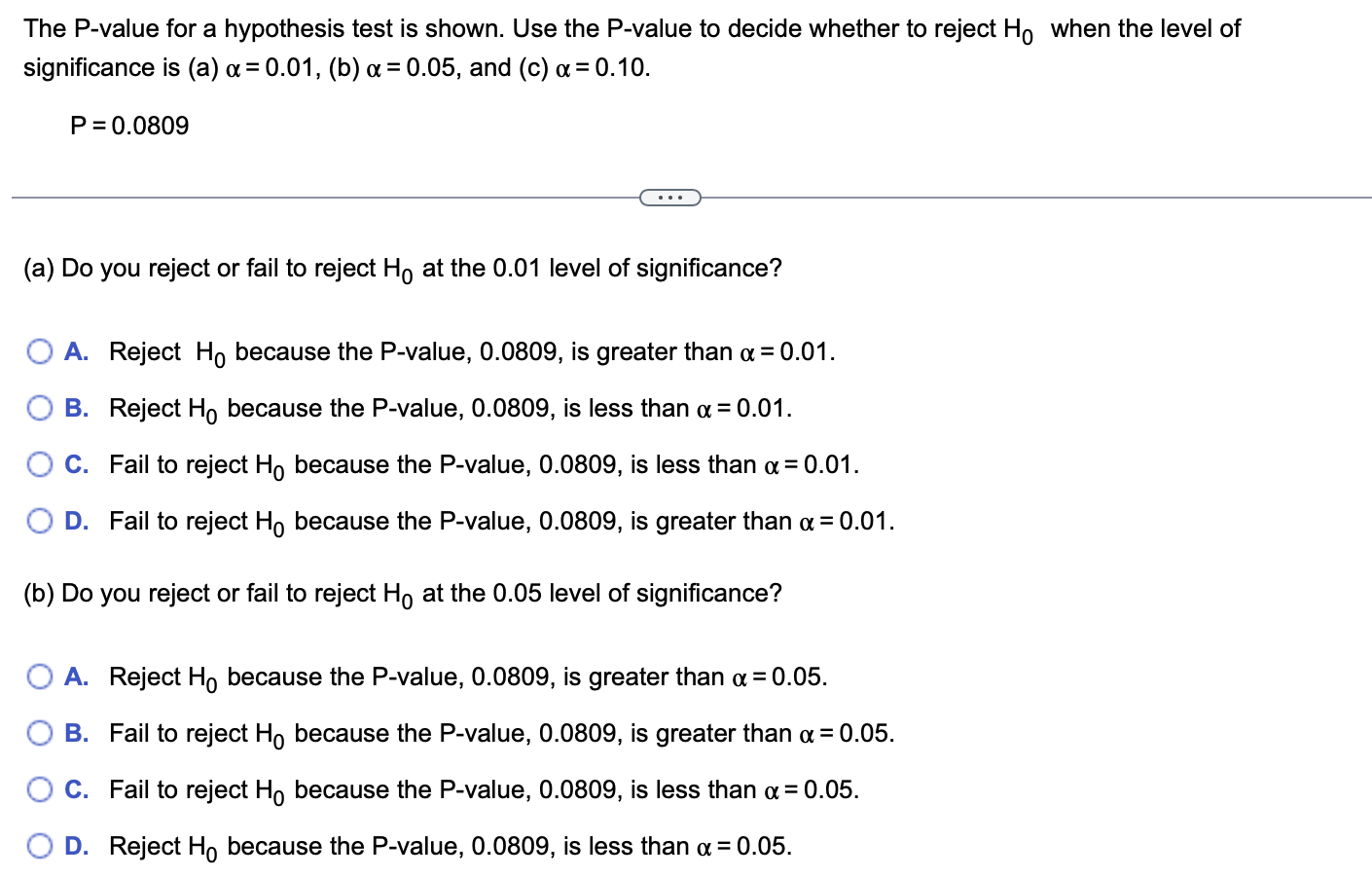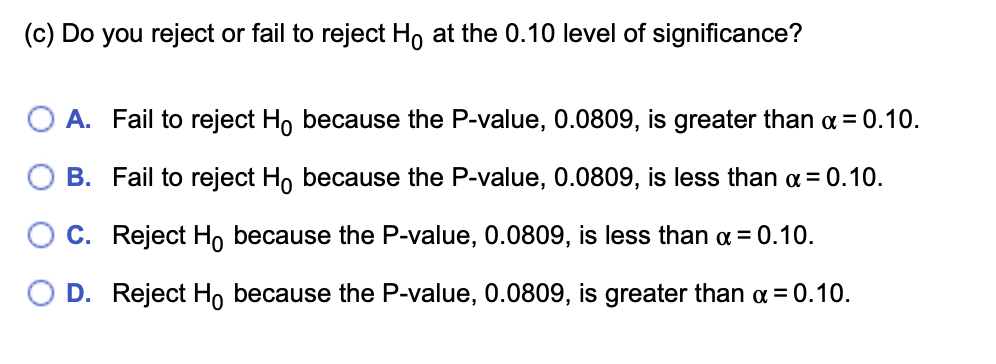Home /
Expert Answers /
Statistics and Probability /
the-p-value-for-a-hypothesis-test-is-shown-use-the-p-value-to-decide-whether-to-reject-mathrm-pa419
(Solved): The P-value for a hypothesis test is shown. Use the P-value to decide whether to reject \( \mathrm ...
The P-value for a hypothesis test is shown. Use the P-value to decide whether to reject \( \mathrm{H}_{0} \) when the level of significance is (a) \( \alpha=0.01 \), (b) \( \alpha=0.05 \), and (c) \( \alpha=0.10 \). \[ P=0.0809 \] (a) Do you reject or fail to reject \( \mathrm{H}_{0} \) at the \( 0.01 \) level of significance? A. Reject \( \mathrm{H}_{0} \) because the \( \mathrm{P} \)-value, \( 0.0809 \), is greater than \( \alpha=0.01 \). B. Reject \( \mathrm{H}_{0} \) because the \( \mathrm{P} \)-value, \( 0.0809 \), is less than \( \alpha=0.01 \). C. Fail to reject \( \mathrm{H}_{0} \) because the \( \mathrm{P} \)-value, \( 0.0809 \), is less than \( \alpha=0.01 \). D. Fail to reject \( \mathrm{H}_{0} \) because the \( \mathrm{P} \)-value, \( 0.0809 \), is greater than \( \alpha=0.01 \). (b) Do you reject or fail to reject \( \mathrm{H}_{0} \) at the \( 0.05 \) level of significance? A. Reject \( \mathrm{H}_{0} \) because the P-value, \( 0.0809 \), is greater than \( \alpha=0.05 \). B. Fail to reject \( \mathrm{H}_{0} \) because the \( \mathrm{P} \)-value, \( 0.0809 \), is greater than \( \alpha=0.05 \). C. Fail to reject \( \mathrm{H}_{0} \) because the \( \mathrm{P} \)-value, \( 0.0809 \), is less than \( \alpha=0.05 \). D. Reject \( \mathrm{H}_{0} \) because the \( \mathrm{P} \)-value, \( 0.0809 \), is less than \( \alpha=0.05 \).
c) Do you reject or fail to reject \( \mathrm{H}_{0} \) at the \( 0.10 \) level of significance? A. Fail to reject \( \mathrm{H}_{0} \) because the \( \mathrm{P} \)-value, \( 0.0809 \), is greater than \( \alpha=0.10 \). B. Fail to reject \( \mathrm{H}_{0} \) because the \( \mathrm{P} \)-value, \( 0.0809 \), is less than \( \alpha=0.10 \). C. Reject \( \mathrm{H}_{0} \) because the \( \mathrm{P} \)-value, \( 0.0809 \), is less than \( \alpha=0.10 \). D. Reject \( \mathrm{H}_{0} \) because the \( \mathrm{P} \)-value, \( 0.0809 \), is greater than \( \alpha=0.10 \).

